You are here
Tour from Khujand to Dushanbe.
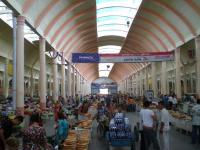
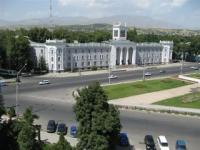
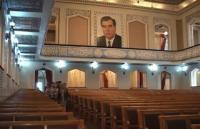
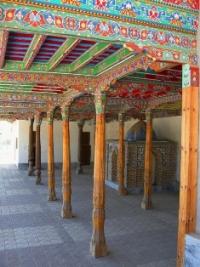
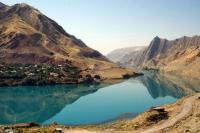
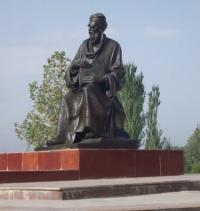
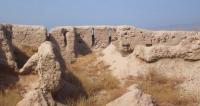
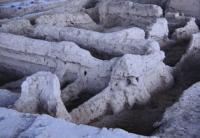
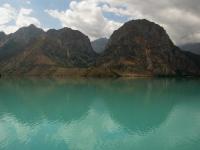
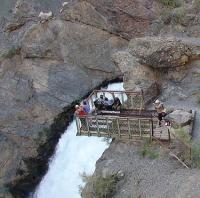

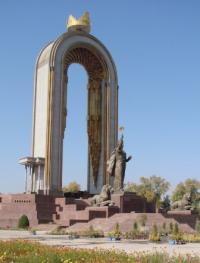
Trip from Penjikent to lake Iskanderkul.
“Not all those who wander are lost”
J.R.R. Tolkien.
The short description of a route of tour from the north of Tajikistan through the Turkestan ridge to Ghissar fortresses:
Tashkent - Check Point «Oibek» (Uzbekistan) - Check Point «Fotekhobod» (Tajikistan) – town of Khudjand - town of Istaravshan - pass Shahristan - kishlak Urmetan - town of Pendjikent – Marguzor lakes - settlement Aini - lake Iskanderkul - kishlak Sartog - valley Saratog - pass Anzob - gorge Varzob – city of Dushanbe - town of Ghissar - gorge Romit.
Extension of route: 1070 km.
Seasonallity: from May 1th till October, 30th.
Best time for tour: June - August.
Duration of tour: 8 days, 7 nights.
The detailed program of automobile tour from Uzbekistan to Tajikistan:
Trip walks in Tajikistan.
Day 1. Tashkent - Check Point «Oibek» (Uzbekistan) - Check Point «Fotekhobod» (Tajikistan) - town of Khujand (67 km).
Meeting on tourists on a check point «Fotekhobod».
Transfer: a check point «Fotekhobod» - the town of Khujand (67 km). Arrival in Khujand. Khudjant – town in the north of Tajikistan, administrative centre Sogd of province. One of the most ancient towns of the Central Asia. The town of Tajikistan second on the size, the important transport unit, political, economic, cultural and a centre of science of the country. From January, 10th, till February, 26th, 1991 the city carried a name Leninabad (the town has been named in honour of Century of V.I. Lenin).
Excursion on town, visiting of a historical museum. The museum is opened on November, 29th, 1986 in days of celebrating of the 2500 anniversary of Khudjant. He is located in premises fortress walls of east fortification Khudjant of a fortress VIII - X в.в., which was a part of defensive fortifications of town.
Visiting Khudjant of a fortress. During all history Khudjant heart of city was its fortress. For 2500 Khudjant the fortress extended together with city, collapsed conquerors, built up anew, always remained a symbol of stability of Tadjik people.
Visiting of mosque Masdzhidi Djami. The mosque has been constructed in 1512 - 1513. Iwan of 30 columns, adjoins east wall of a winter hall, here too there are 20 columns and enters into a courtyard of a mosque. The base of a mosque on which walls of a building stand, are laid out from burnt a brick.
Visiting of a palace «Arbob» S.Urunhodzhaev name. It is one of great architectural places of interest in the town of Khudjand constructed under the initiative of twice Hero of Socialist Work (1948 1957) Saidkhodji Urunkhodjaev, in 1959.
Visiting of the mausoleum of Sheikh Muslihiddina. It is the large memorial ensemble which is being a historical part of town, it is constructed on tomb Muslikhiddin Khudjandi - the governor of the town of Hudzhanta, the poet lived in XII century. Legends say, that sheikh Muslikhiddin was sacred wondermonger. Visiting popular and well-known market Panchashbe, located in downtown. The market is the greatest closed market in the Central Asia, charm buyers the diversity, the various smells, a rich choice of fruit and vegetables. « Panchashbe” - the fourth day of week (Thursday, in translation from the Tadjik language), during old times it was day of the big trade.
Lunch. After a lunch a trip on Kairakum a water basin - the Tadjik sea. Walk in vicinities, rest, bathing. Returning in Khudjand. Dinner and overnight in hotel.
Day 2. The town of Khudjand - the town of Istaravshan - settlement Shakhristan - pass Shakhristan of 3378 meters above sea level - kishlak Urmetan - the town of Pendjikent (263 km).
Breakfast. Transfer: Khudjand - the town of Istaravshan (78 km). The town of Istaravshan is in Sogd province of Tajikistan, is an administrative centre of area Istaravshan. It is located in the north of Tajikistan, in foothills of the Turkestan ridge. Earlier the town was called - Ur-Tyube. On November, 10th, 2000 the town has been renamed in - Istaravshan.
The population of city 59 900 person (according to 2015). Istaravshan - town-museum, the ancient center of trade and the crafts, one of the most ancient towns of the Central Asia. In 2002 Istaravshan it was executed 2500. The town is based in VI century B.C. Akhmenid by tsar Kirom, has strengthened settlement three of some walls and a citadel. Arrival in Istaravshan.
Visiting of a mosque-madrasah the Kook-Gumbez (XVI century). The Mosque-madrasah the Kook-Gumbez is located in the western part of town and is called because of blue tiles of a dome. The Kook-Gumbez in translation into Russian means «The Blue dome»). Mosque-madrasah it is constructed under initiative Abdulatif of the Sultan - the son of the well-known scientist-astronomer and the philosopher - Ulugbek, grandson Amir Timur.
Visiting of mausoleum Khazrati-Shokh (XVIII century). In the mausoleum it is buried sacred Khazrati-Shokh - native brother Kusam Ibn Abbas, the cousin of prophet Muhammada, bury in XI century in the Samarkand architectural ensemble Shakhi-Zinda. The mausoleum one of the most ancient places of interest of Tajikistan, is included in a history-architectural complex «Khazrati-Shokh» which is in an old part of the town of Istaravshan. The complex consists of three cult constructions: mausoleum Khazrati-Shokh, mausoleum Khudoer Valami and mosques Khazrati-Shokh (known as Namazgokh), are dated XIX century. All three structures are located by a semicircle. Each of them is constructed at various times and has the history of creation and purpose.
Visiting of mausoleum Chor-Gumbaz (the beginning XIX end of XX centuries). Mausoleum Chor-Gumbaz is located in northwest part Istaravshan at a tomb of local religious figure Eshoni Mavlono. The mausoleum represents obit a mosque with a wooden dome and a column. In 2001 - 2002 the mausoleum has been restored in honour of the 2500 anniversary of the town of Istaravshan.
Visiting of mosque Khavzi Sangin. The mosque has been constructed in 1904 of the last century. This construction has received the name from khauz (reservoir) which coast are strengthened by a stone. According to a legend, the reservoir has been constructed under the order of Sultan Parvonachi. Stones carried on camels. After end of all works the Sultan has presented all camels to slaves and has released them on freedom. Near a mosque there is a small mausoleum. Under some data, in 1895 the mausoleum was called Shofozil Ibn Abbas, and the building has been constructed in 1795. Under other data here it is buried Fuzail Ibn Abbas.
Lunch in local cafe. Transfer: the town of Istaravshan - Istaravshan a water basin (12 km). A stop at a water basin, photographing. Our way goes through the Turkestan ridge.
The further transfer: Istaravshan a water basin - pass Shakhristan (61 km). A stop on pass, short walk in vicinities, photographing. In the West from pass the Dzhizak province of Republic Uzbekistan is well looked through.
The further transfer: pass Shakhristan - Pendjikent (112 km). After settlement Aini our way to Pendjikent on Zerafshan to a valley along the river Zeravshan. Arrival in Pendjikent, transfer to hotel, accommodation, a dinner and overnight.
Day 3. Pendjikent - Marguzor lakes - Pendjikent (122 km).
Breakfast. A trip on Marguzor lakes. Transfer: Penjikent - settlement of Sufiyen - settlement Yangi Kishlok - lake Mizhgon (43 km). Marguzor lakes (in translation from the Tajik seven beauties). The cascade of Marguzor lakes is in the valley of the river Shing which in ancient times served as the place of brisk trade. Gorge of the river. The Shing was a convenient way of the message between Central Asia and India. The first lake in the cascade of Marguzor lakes - the most beautiful lake Nezhigon (in translation from Tajik - an eyelash). Walk in the vicinities of the lake Nezhigon.
Transfer: lake Nezhigon - lake Soy (2 km). Behind the lake Nezhigon there is a lake Soy (in translation from Tajik - a shadow). Walk in the vicinities of the lake Soy.
Transfer: lake Soy - lake Gushor (1 km). Walk in the vicinities of the lake Gushor. The lake Gushor (in translation from Tajik - vigilance) is located at the height of 1700 meters above sea level
Transfer: lake Gushor - lake Nofin (2 km). Further on the serpentine of the road the lake Nofin is located (in a translation from Tajik - an umbilical cord). Walk in the vicinities of the lake Nofin.
Transfer: lake Nofin - lake Khurdak (4 km). Behind the lake Nofin the settlement of Padrud, further the lake Khurdak is located (in translation from Tajik - the baby). Water in it cold, blue and transparent. On the way to the lake Hurdak gardens from peach and apple-trees meet. Walk in the vicinities of the lake Khurdak.
Transfer: lake Khurdak - lake Marguzor (4 km). The road to the lake Marguzor (in translation from Tajik - abundance of greens) goes through the clover field which is bordered by thickets of a dogrose and a barberry. Walk in the vicinities of the lake Marguzor.
Transfer: lake Marguzor - lake Khazor Chashma (5 km). Further the lake - Khazor Chashma (in translation from Tajik - one thousand sources), this seventh lake in the cascade of the known lakes the most beautiful at the height of 2400 meters above sea level, 4,5 meters long and 85 meters in depth, water here very transparent and cold.
Two rivers, from the South the river Khisor - from the East - the river Darakhti Surkh flow into it (in translation from Tajik - mahogany). Walk in the vicinities of the lake Khazor Chashma, a picnic. Return to Penjikent (61 km). Arrival in Penjikent, dinner and overnight.
Day 4. Pendjikent - lake Iskanderkul (207 km).
Breakfast. The town Pendjikent located in the western part of Tajikistan on left I protect the rivers Zaravshan to the east of Samarkand. The town towers at height of 900 meters above sea level. Pendjikent it is well-known for monuments of architecture, a zone of sea tour of the river Zaravshan.
The status of the town of Pendjikent has received in 1953. The Population for 2003 has 34 000 person. Pendjikent is one of the most ancient cities of the Central Asia which age makes 5500 years. The name of city on Russian is translated as «Five settlements». In V - VIII centuries н.э. Pendjikent represented one of the major cultural and craft centers of Sogdiana.
The beginning of excursion on Pendjikent and to vicinities. Visiting of a museum of name Rudaki, the founder of the Tadjik classical literature. Visiting of ancient site of ancient settlement Pendjikent.
The site of ancient settlement ancient Pendjikent is archeologic monument V - VII centuries and borrows territory in 13,5 hectares. The site of ancient settlement consists of strengthenings, shakhistan with a defensive wall, suburban manors and a necropolis.
The town has been constructed in V a century and has existed till VII century. Excavation on a site of ancient settlement are conducted since 1947. Walls of many houses were saved up to the second floor. In total 2 palace complexes, 2 temple complexes, 2 market complexes, 8 streets, tens multiroom houses of the nobility and ordinary citizens, city walls V - VIII centuries are dug out.
Transfer: town of Pendjikent - settlement Sarazm (13 km).
Settlement Sarazm IV - II millenia B.C., located close Pendjikent, with well saved temples of fire, public and residential buildings, cult and palace constructions. Here many products from copper, bronze, lead, silver, gold, the weapon, the ornaments concerning to IV - to II millenia up to B.C. have been found.
The settlement represents extended with the West on the east a height on left I protect the rivers Zeravshan. The Total area of settlement exceeds 100 hectare. Sarazm was the center of ancient manufacture of ore. Its inhabitants, have found gold and silver in valley Zaravshan, sent it in the countries of the Average and the Near East and the Western India.
Returning in Pendjikent (13 km). A lunch in cafe of town.
After a lunch transfer: Pendjikent - settlement Mazori Sharif (33 km).
In settlement Mazori Sharif visiting of mausoleum Mukhammad Bashoro. Mausoleum Mukhammad Bashoro is an architectural monument XII - XIV centuries and consists from spacious of some domes with inputs on the main facade. The mausoleum is located in one of fine gorges of northern mountains Zeravshan of a ridge. About person Mukhammad Bashoro it is known very little. The mausoleum consists of a spacious central dome hall, at the left and to the right of which a number of premises is located.
The main facade of the mausoleum leaves to the mountain river, from here to it the road conducts. Originally the mausoleum has been constructed without a portal. In XIV century the portal, with a decorative carved terracotta (it is cut out on crude clay, is burnt and collected on a portal) unique beauty and complexity has been constructed.
Transfer: settlement Mazori Sharif - settlement Aini - lake Iskanderkul (139 km).
On a way to settlement Aini visiting Aini a minaret. Arrival on a pearl of mountains Fany - lake Iskanderkul. Transfer on a camp center «Iskanderkul», accommodation. There is an opinion, that the lake Iskanderkul is named in honour of Alexander the Great, the ancient greek commander who has won local mountaineers, has created this lake and has flooded settlements of mountaineers. The lake, is mentioned, in descriptions of a campaign of Alexander the Great and to these the antiquity of lake proves to be true.
The level of this lake gradually decreases, to what coastal stones on slopes of mountains surrounding lake testify. A lunch in eating house in the camp center. After a lunch walk on 38 a meter falls and five springs Panchashma. Returning to a camp center. A dinner and overnight.
Day 5. Lakes Iskanderkul - kishlak Saratog - valley Saratog (10 km).
Breakfast. After a breakfast transfer to the most beautiful valley of Tajikistan - valley Saratog. Valley Saratog is surrounded mountains Fany, from here opens a kind on the highest peak of mountains Fany - peak Chimtarga of 4955 meters above sea level. Foot walk to pass Dukdon. On a way on pass we shall see tremendous landscapes of mountains Fany, the river Karatog. Mountains Fany, it is the mountain ridges which have stretched in latitudinal strike a direction, - from the West on the east, and in meridian direction - from the south on the north.
The birch, a poplar, a raspberry, a black and red currant, sea-buckthorn berries, a barberry, a dogrose, a wild cherry much grow in valleys of the mountain rivers, ephedra, above - a juniper which has the local name - Archa, the age of some trees reaches about 1000, still above - colourful miscellaneous herbs the Alpine meadows. Picnic at the river Karatog. After a lunch returning in kishlak Saratog. A dinner in the Tadjik house with national kitchen and overnight in the guest house.
Day 6. Kishlak Saratog - lake Iskanderkul - pass Anzob of 3373 meters above a level - gorge Varzob - city Dushanbe (120 km).
Breakfast. Transfer: kishlak Saratog - lake Iskanderkul - pass Anzob (30 km). On a way a stop on pass Anzob, short walk and photographing in vicinities pass. From road the surprising landscape on mountains of Ghissar mountains opens, the road up to pass Anzob goes along the river Varzob.
Transfer: pass Anzob - Dushanbe (90 km). In front of Dushanbe we shall go through picturesque gorge Varzob, here it is a lot of vacation spots, hotels, cafe and restaurants. Arrival in Dushanbe, transfer to hotel, accommodation, rest, free time. Dinner and overnight.
Day 7. Dushanbe. Excursion on sights of Dushanbe.
Breakfast. The beginning of excursion on city Dushanbe to capital of Tajikistan. The city Dushanbe, till 1961 was called - the city of Stalinabad. Dushanbe is located in center Ghissar of a valley at height more than 800 meters above sea level. From the north and the east it is surrounded with mountains with snow-white tops of Ghissar mountains. The highest tops rise up to heights of four and more thousand meters above sea level, from the southern party the river Kafirnigan proceeds.
Visiting of a museum of ethnography. The collection of ethnographic places of interest of culture and a life of Tadjik people is stored in a museum of ethnography of Tajikistan. The building of a museum of ethnography has been constructed in 1934.
Visiting of a national museum of antiquities of Tajikistan. Opening ceremony of a new building of the National museum of Tajikistan took place in March, 2013 in Dushanbe. The museum consists of 22 greater and small exposition halls. These are departments of the nature, an antiquity of the Middle Ages new and the newest history, graphic and applied arts.
Visiting of Park of a Victory over hills where it is possible photographing a panorama of city Dushanbe. Lunch in local cafe or restaurant.
Visiting of East market Shokhmansur. Market Shokhmansur - the central market of city, at a market is also the second name - the Green Market. The market noisy, close, interesting and diverse. Here it is possible to get everything, that you will wish from food stuffs up to national clothes and souvenirs. Evening walk on downtown at monument Somoni, in park Rudaki, at national library of Tajikistan, on the area where is a flag of Tajikistan.
Dinner in national tea bar Rokhat. Tea bar Rokhat has won sympathy and love of the clients since 1958. Since second half XX century is the biggest and popular tea bar Dushanbe. The wooden east patterns created by hands of the Tadjik masters, are an original work of art which made national colour, as does tea bar Rokhat by place of interest of city. Returning in hotel, overnight.
Day 8. Dushanbe - the town of Ghissar - Dushanbe - gorge Romit - Dushanbe (128 km).
Breakfast. A trip to the town of Ghissar (30 km). Arrival in Ghissar, excursion in Ghissar a fortress. Ghissar a fortress - a palace of one of emir Bukhara. The fortress with walls thickness боле 1 meter, with loopholes for guns and guns towers on a slope of a low hill. Inside of a fortress there was a pool and a garden. Opposite to a fortress there was a market square about a caravan-serai and a lot of trading shop. At Ghissar a fortress it is a lot of legends.
On one of legends - a fortress has constructed Afrasiab for protection from Rustam (the glorified heroes of product Firdousi «Shakhname»). Other legend speaks, that caliph Ali has arrived to these places on horse Dul-Dul to preach an islam and has stopped on mountain which today has the name Poi-Dul-Dul (to the West from Ghissar).
Under a kind of the acrobat-rope-walker he has made the way from mountain in a fortress, but here has been learned and taken in a captivity. Its correct horse has brought to him sword Zulfikar. By means of this sword caliph Ali has exterminated the enemies, including the malicious wizard who at that time owned a fortress. Near to a fortress two huge plane trees, which from 500 till 700 years grow. Lunch in national tea bar near to Ghissar fortresses.
After a lunch returning in Dushanbe - town Bakhdat - passing city it is gone to gorge Romit (64 km). Walk on gorge and along the river with fine a landscape of mountains in a combination to the blue river Kafarnigan. Returning in city Dushanbe (34 km). Dinner at national restaurant, overnight in the hotel.
Day 9. Departure from Dushanbe.
Accompanying service at departure to airport. Departure from Dushanbe.
Note:
The author program is Alexander Petrovs. Copying and introduction - only from the sanction of the author - petrovsra@mail.ru







